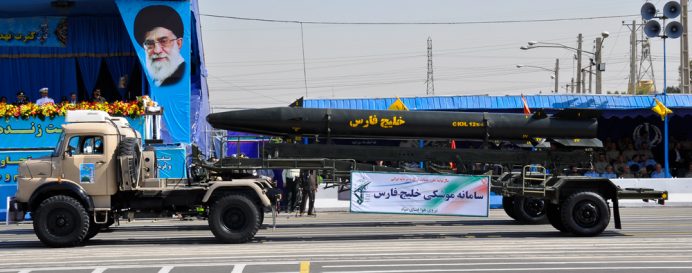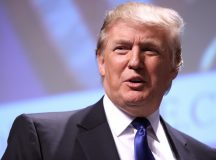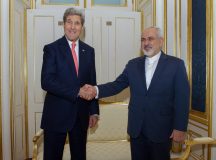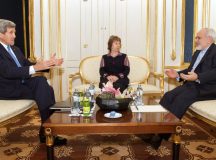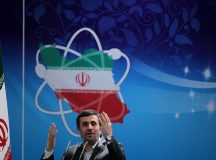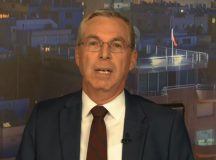Ezra Friedman warns that the expiration of the Iran arms embargo in October 2020 will allow Iran not only to supply more advanced conventional weapons to its proxy forces across the Shi’ite Crescent but also to enhance its own comprehensive conventional military deterrent. The danger is that credible American or Israeli military options will be deterred and Iran will expand its malign activities across the region, all the while playing off the Europeans against the Americans in future negotiations. Friedman calls for a comprehensive US strategy in response, one that embraces America’s allies and multilateralism.
Introduction
The world’s attention has understandably been focused on whether the 2015 Joint Comprehensive Plan of Action (JCPOA), commonly known as the Iran nuclear deal, can survive the May 2018 decision by President Donald Trump to withdraw from the agreement. Efforts to respond to Iran’s subsequent suspension of compliance , including the decision by the United Kingdom, France and Germany (known as the E3) to trigger the JCPOA’s dispute resolution mechanism (DRM) in January are ongoing.
Less attention has been given to a more immediate threat: the impending expiration of the arms transfer provisions codified within UNSC 2231. The first controls, set to expire in October of 2020, pertain to the export of heavy conventional weapons that are offensive in nature. The United Nations Register for Conventional Arms lists seven categories of weaponry that are covered by the agreement, including combat planes, battle tanks and warships amongst other warfighting platforms. The second set of limitations, which will expire three years later in 2023, covers the export to Iran of technology and components used in nuclear weapon delivery systems such as ballistic missile or satellite technology. Both of these sections in the agreement stipulate that exports of such goods to Iran will be approved on a case by case basis in the UNSC. If the arms embargo expires as scheduled, it will be a significant development, delivering Iran major political, tactical, and strategic gains.
This article explores how, first, expiration will allow Iran to supply more advanced conventional weapons to its proxy forces across the Shi’ite Crescent, and, second, enhance its own national security doctrine through the likely introduction of new conventional warfighting platforms which will strengthen its own force planning by building a comprehensive conventional military deterrent. This may significantly deter any credible American or Israeli military option. In addition, Tehran may increase its illegal arms exports to the Taliban in Afghanistan and other state and non-state actors in the Middle East. In the past this has included Venezuela, Sudan and across the Sahel. In short, Iran will be able to expand its malign activities across the region while continuing to play the Europeans against the Americans in future negotiations. Moreover, Tehran’s position in any future deal will be strengthened through increased Russian and Chinese support following the expiration of the international arms embargo. Both states will be loath to give up on a major export market and see the sanctioned arms embargo returned.
The expiration of the arms embargo means strengthened proxy forces
The prohibition on arms has restricted Iran’s ability to make its military into a modern conventional fighting force, as have long term American and European restrictions on the arms exports to the country. Iran’s originally US-armed security forces have created alternative approaches to military doctrine and strategy to ensure regime security and enhance its regional influence. Specifically, the regime has pursued policies that have consolidated its strategic depth and created a viable military deterrent to attacks on the homeland. It has created and enhanced capabilities in the fields of ballistic missiles and anti-access/anti-denial to make up for its conventional inferiority.
In addition, Iran has pursued the broader objective of regional hegemony. It has seen major success in Yemen, Iraq, Syria, and Lebanon through the creation and support of proxy forces. These proxy forces also act as a deterrent that can be activated against regional targets, specifically American allies in the Gulf and Israel.
Iranian proxies have been the main beneficiaries of past Iranian violations of United National Security Council (UNSC) arms embargoes. In Yemen, the Houthis have used a plethora of arms provided by Tehran in a devastating civil war against the Saudi-led coalition and Hadi-backed forces. This includes the use of drones and ballistic missiles to target Saudi cities, as well as surface-to-air and anti-tank missiles. In this regard, Iran has not only violated UNSCR 2231, but also the UNSC sanctioned arms embargo on Yemen. In Iraq, Iran has provided material support to the Popular Mobilisation Forces (PMF) through the Iranian Revolutionary Guards Corps (IRGC) Quds Force. In Syria, the Quds Force has been instrumental in arming and supporting Shia militias allied with the Assad regime while also attempting to create arms production capabilities for its proxies in the country.
Hezbollah, in Lebanon, has arguably been the primary beneficiary of Iranian patronage. Iran has continuously provided missiles and rockets to Hezbollah since the 1990s, including more recently advanced technology making them more precise. Through its control of territories in Iraq, Syria, and Lebanon, the Iranian Quds Force has been able to create secure land and air routes to supply Hezbollah and other proxy forces. This not only contravenes the non-nuclear provisions set up within the JCPOA but also violates UNSCR 1701, which calls for the complete disarmament of Hezbollah.
The expiration of the arms embargo would likely lead to Iranian proxies increasing their capabilities. Iran could import relevant missile technologies in the field of ballistic, anti-air and anti-ship conventional systems. These weapons would either be sent directly to proxy groups, such as Hezbollah, or the knowledge reverse-engineered and produced on an industrial scale (and lower cost) domestically.
The expiration of the arms embargo means the modernisation of Iran’s military capabilities and a beefed up Iranian conventional deterrent
While Iran’s regional proxies stand to benefit from the expiration of the arms embargo, the lifting of the arms embargo on conventional warfighting platforms in October 2020 will also allows Iran to purchase new advanced weapons systems for itself. According to the US Defense Intelligence Agency 2019 Iran Military Power report, Tehran has previously shown interest in buying Russian Su-30 fighters, Yak-130 trainers, T-90 MBTs and air defense systems. The embargo itself is codified within UNSC 2231 Annex B (5) in which the UNSC clearly states that the controls such exports applies, ‘until the date five years after JCPOA Adoption Day.’ Annex B (5) clearly lists these platforms include fourth-generation fighter aircraft, main battle tanks, heavy artillery and submarines amongst other systems. While this will allow countries like Russia and China to export arms to Iran that are no longer under strict controls of UNSC 2231, The US and EU arms embargos will remain in place. This will allow Iran’s military apparatus to upgrade their capabilities, in line with the 21st century needs of a modern fighting force.
The Islamic Republic’s Armed Forces is divided into two major sections that are responsible for the defense of the regime and territorial integrity of Iran. The Artesh, Iran’s ‘Conventional’ Army, and the IRGC’s conventional forces. Both organisations exist in parallel to one another, with the Artesh being significantly larger but less well equipped in comparison to the IRGC. The IRGC is heavily involved in the regime’s political processes, the Iranian economy and other parts of Iranian society. The IRGC are the official guardians of the Islamic Revolution, granting them both the trust of the regime and greater access to resources. The Artesh is largely sidelined from the political power centers of the regime given its historical connection to the Shah pre-Islamic Revolution. Since then, it has played a secondary role to the IRGC and faces significantly more difficulties in acquiring the necessary resources to remain a viable fighting force as a result.
This will allow Iran to fundamentally change its national security doctrine in the medium to long term. With time, the regime will create a conventional deterrent to any potential American or Israeli strike on its nuclear facilities, thereby creating another potent layer of defense. This will also allow Iran to increase its expeditionary capabilities in the Middle East, where it could more easily come to the aid of its allies and proxy groups. To be sure, such developments will take time, as the Iranian military would need to adjust to new platforms, including tactics integrating large amounts of new equipment into its arsenal.
Iran would also be able to significantly upgrade its ballistic missile arsenal, some of which may be capable of carrying a nuclear weapon beginning in 2023. Currently, Iran can deploy a host of medium-range ballistic missiles some of which that are theoretically capable of mounting a nuclear warhead, such as the Sejjil, which has a maximum range of 2,000 kilometers. Other medium range ballistic missiles in development include the Ghadr and Emad, both with slightly shorter ranges (1,950 and 1,700 kilometers respectively) and capable of mounting nuclear warheads. This places Israel, regional allies, US bases in the Middle East and parts of Europe within missile range.
Currently, Iran does not have nuclear weapons capability, despite a confirmed 2003 secret nuclear weapons program in violation of its commitments under the Nonproliferation Treaty. If Iran is allowed to acquire additional advanced missiles, technology, and assistance from Russia, China, or North Korea (DPRK), it will be able to significantly increase its capabilities. This is a natural occurrence, considering that all three actors have collaborated with Iran on its ballistic missile program in the past. Russia has provided technical assistance throughout the 1990’s and allowed Iran to accelerate its domestic production timeline for MRBM’s. China and the DPRK also provided significant material support to Iran’s ballistic missile program throughout the 1980’s, into the early 2000’s. This was in form of guidance technology, training and expert collaboration and directly led to the creation of the MRBM Shahab-3, which is nuclear capable and the precursor to the Ghadr and Emad variants currently in development. Renewed assistance from any of these actors would accelerate Iran’s domestic ballistic missile program.
These developments will accelerate the zero-sum game for regional dominance with Iran as a major contender. It would not only inoculate the Islamic Republic from attack but would also require an immense investment in military resources by the United States to contain it. Alternatively (or in conjunction), the United States would need to create a coherent regional coalition with partners in the Arab world and Israel to contain a conventionally empowered and emboldened Iran. Such developments seem unlikely given Washington’s lack of a comprehensive strategy for Tehran.
The return of Great Power competition compounds the dangers of expiration
The return of Great Power competition to the international system is compounding the limited scope of the JCPOA and the dangers of the impending expiration of the UN arms embargo. China and Russia are actively competing with the United States for geographic spheres of influence and the Middle East has become a major arena for competition in recent years. The region has seen annual increases in Chinese economic investment in nearly every state, and the intervention of Russian troops into the Syrian Civil War on behalf of the Assad regime. More importantly, both countries are major arms exporters to the Middle East, a region that has seen arms imports increase by 87 per cent from 2009-13 and 2014-18. Beijing and Moscow, two regimes that share authoritarian strains with Tehran, both wish to remake the international order, and will willingly supply Iran with the necessary fire power to cause issues for the US. This also provides China and Russia premium access to one of the last major unexploited arms export markets.
Renewed competition with China and Russia is motivating a shift in US strategic attention and limited resources. Obama’s ‘pivot to Asia’, Trump’s trade war, the heavy sanctions placed on Russia for interference in the 2016 presidential elections and Moscow’s invasion of Ukraine are but a few examples of the effort by the US to redeploy military, economic and diplomatic resources to combat Chinese and Russian erosion of its influence. This stands in stark contrast to the US withdrawal from Iraq, Trump’s strategic myopia in Syria, the ongoing diplomatic spats with NATO ally Turkey over the acquisition of the Russian S-400 air defence system, as well as the lack of a comprehensive Iran policy. These examples show the need for a long-term policy approach to the Middle East. This would require it to consider second and third-order effects of significant policy decisions that in the past could easily be discounted. The US must consider how its actions in the region within the context of other big players. This will change not only the level of resources but the type of engagement the US has with region. Different policies will create strategic openings for Russia and China, making it critical for the US to identify and rank its interests in the Middle East.
Support for Iran allows both states to leverage growing ties with Tehran vis-à-vis the US to achieve their policy objectives. Such developments have precedence: China, it should be recalled, reduced or eliminated cooperation with Tehran in the late 1990s on a plethora of arms-related projects, including Iran’s nuclear and ballistic missile programs. This was done to safeguard China’s economic development and critical relationship with the US at the time.
The US – regardless of administration – must formulate a comprehensive strategy to deal with Iran
In the short term, there is very little that the United States can do to prevent the expiration of the first stage of the arms embargo. The entire globe is currently gripped by the dual crisis in public health and economic fallout caused by the novel coronavirus. COVID-19 is likely to continue for some time and will take the Trump administration’s limited bandwidth away from the expiring arms embargo. Given the administration’s ‘maximum pressure’ campaign and unilateral withdrawal from the deal, it does not appear that Iran would agree to restart negotiations unless the US lifted economic sanctions. President Trump has steered clear of this course of action, despite the obvious need for a foreign policy win before the November elections. There is also little the United States can do with regards to ensuring the snapback of previous sanctions through the UNSC. The hasty and incoherent withdrawal from the JCPOA by the US ensured that it is no longer a member of the Joint Commission nor a participant in the dispute resolution mechanism. This leaves either a battered second term Trump administration or a future President Joe Biden with limited options in the near term.
Regardless of administration, the US must formulate a comprehensive strategy on Iran for the medium and long term. There must be a consensus as to what the US (not only the current administration) goals are. A non-nuclear armed Iran is a good start, the last thing the US and the other nuclear powers want is a poly-nuclear Middle East which would be the natural result of a nuclear armed Iran. The United States does not have a good track record with ‘regime change’; moderating the current regime’s behavior is the more realistic approach. The alternatives are a bloody war which the United States cannot afford (nor win) or allowing Iran to run amock across the region as it sees fit. Washington can lead an effort to contain and roll back Tehran’s destabilizing approach to the Middle East, contain Iran’s ballistic missile and nuclear programs, but it must begin addressing these issues comprehensively and clearly with realistic policy objectives.
Such a strategy must be built on the dual realisation that the United States success on the international stage relies not only on its economic and military might but also on its alliances. The US finds itself in a time of renewed great power competition not unlike the Cold War. The US triumph over the Soviet Union in the end of the 20th century was achieved through building trust, creating and following an international set of rules and norms, coming to the defense of its allies and engaging in often difficult multilateral diplomacy. The JCPOA, though heavily flawed, was achieved through painstaking international consensus building by the Obama administration with the P5+1. It placed Iran in an impossible situation economically and diplomatically. The JCPOA is a strong lesson on how to return Iran to negotiations. In order to replicate that pressure, a different policy approach to the current administration is necessary, one that embraces America’s allies and multilateralism.
As the United States begins to shift forces and focus to Europe and Asia, it must supplement a smaller military footprint with a reliable and cohesive coalition of allies to assist in a new Iran strategy. Tehran will continue to pursue a revolutionary role in the Middle East, regardless of the JCPOA. Iran, like Russia and China, wishes to remake the Middle East in its image, one where the United States has a negligible role. These policies have been greatly assisted through the JCPOA in its current form, which provided billions in funding through sanctions relief and have directly assisted in these efforts. These resources have bolstered Iran’s regional proxies’ capabilities, strengthened its ballistic missile program and allowed Iran to exert heavy levels of clout in Beirut, Damascus, Saana, and Baghdad. The JCPOA in its current form is unsustainable and will lead to increased conflict. A diplomatic solution in which a new, broader, consensus building agreement, JCPOA 2.0, that encompasses both the nuclear and non-nuclear issues would be the ideal. Whether this is possible given the strained relations and competing interests between the great powers is up for debate.

